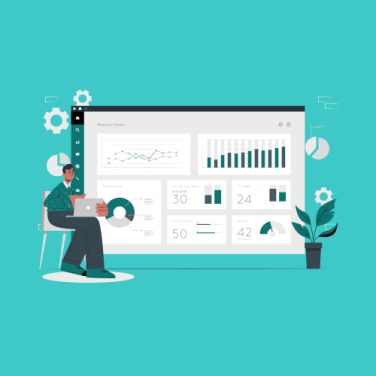Remote work has grown by over 50% in the past five years, driven by digital collaboration platforms and evolving employee expectations. And as distributed teams become the norm, organisations need reliable tools to track work hours beyond the office walls.
Why traditional methods fall short
Spreadsheets and sign-in sheets lack real-time verification, leave room for manual tampering, and require significant administrative effort. They fail to provide geolocation data or biometric confirmation, leading to compliance risks and payroll discrepancies.
By investing in dedicated remote attendance tracking software, organisations can automate clock-ins, enforce geofencing rules, and integrate data seamlessly with payroll and HRIS systems.
This transformation sets the foundation for accurate, transparent time capture and fosters trust across distributed workforces.
TL;DR: Choosing the best remote attendance tracking software
- Identify must-have features: geofencing, biometrics, offline mode.
- Assess integration needs with payroll, HRIS, and analytics.
- Compare deployment models: cloud vs on-premises.
- Evaluate pricing structures and calculate potential ROI.
- Understand vendor support, SLAs, and compliance certifications.
Key features that define the best remote attendance tracking solution
Time capture and authentication:
Reliable time capture starts with multi-factor clock-ins. Leading remote attendance tracking software offers:
- Facial recognition and fingerprint scanning to prevent buddy punching.
- Tap-based clock-ins with one-click mobile check-ins via MiHCM’s Mobile Attendance Tracking.
- GPS-enabled clock-ins to verify location, ensuring employees are on-site.
These capabilities help ensure accurate time capture with GPS-enabled clock-ins, reducing disputes and payroll errors.
Real-time alerts and notifications:
Push notifications and email reminders keep teams on schedule. Features include:
- Automated reminders for missed clock-ins or break thresholds.
- Immediate alerts for geofence breaches or off-site punches.
- Customisable notification rules for late arrivals and overtime.
Timely alerts empower employees with self-service attendance and leave management, boosting accountability across the remote workforce.
Comprehensive dashboards provide attendance analytics and trend reporting, enabling managers to identify patterns in punctuality and absenteeism at a glance.
Geofencing, biometrics, and offline mode – ensuring accurate tracking:
- Geofence Enforcement: Virtual boundaries prevent clock-ins outside approved zones, stopping buddy punching and ghost shifts.
- Biometric Authentication: Facial recognition, fingerprint scanning, or voice ID confirm employee identity at check-in.
- Offline Mode: Allows field teams to clock in where connectivity is limited; data syncs automatically once back online.
- Use Case: Field Teams: Utility technicians log hours in remote locations, syncing data when network access resumes.
- Use Case: Remote Sites: Construction crews verify location with geofencing, ensuring compliance with job-site regulations.
- Use Case: Travel Jobs: Sales reps record on-the-go hours via mobile app, preserving data integrity even in transit.
Integration with Payroll and HRIS: Streamlining workflows
Key integration points:
Seamless data flow between attendance and HR systems eliminates manual entry and reduces errors. Common integration touchpoints include:
- Automated Time-to-Pay: Attendance records feed directly into payroll engines, accelerating payroll cycles.
- Leave Sync: Approved time-off requests update HRIS calendars, maintaining accurate headcount data.
- Shift Scheduling: Real-time attendance data refines workforce planning and labor forecasting.
Avoiding data silos:
API connectors and middleware enable custom workflows, ensuring:
- Consistent data across HR, finance, and operations dashboards.
- Error-free reporting for compliance audits.
- Unified analytics combining attendance trends with productivity metrics.
Cloud-Based vs On-Premises: Pros and Cons
| Criteria | Cloud-Based | On-Premises |
|---|---|---|
| Deployment Speed | Rapid setup, automatic updates | Longer installation, manual patching |
| Control & Customisation | Limited custom options | Full access to source and configurations |
| Cost Model | Subscription, no upfront hardware | Capital expenditure on servers and licenses |
| Scalability | Elastic resources on demand | Requires additional hardware |
| Security | Provider-managed, SOC 2/GDPR compliant | Full data sovereignty, in-house controls |
Choosing between cloud-based and on-premises remote attendance tracking software hinges on your IT strategy, budget, and compliance requirements.
Evaluating pricing models and ROI for remote attendance software
Estimating TCO and ROI:
Compare pricing frameworks to project total cost of ownership:
- Per-User Subscription: Scales linearly with headcount.
- Tiered Bundles: Package features in user bands for predictable costs.
- Enterprise Licensing: Flat fee for unlimited users, often includes premium support.
- Hardware Expenses: Badge readers or biometric terminals add to CapEx.
- Implementation Services: Training and integration fees may apply.
ROI drivers:
- Reduced payroll adjustments through accurate time capture.
- Time savings from automated reporting and approvals.
- Compliance risk mitigation avoids fines.
- Improved productivity via real-time attendance insights.
Pilot tests help validate savings before a full rollout.
Vendor support and service levels: What to expect
- Support Tiers: Standard (business hours), Premium (extended hours), 24/7 coverage.
- Service Level Agreements: Uptime guarantees (99.9%+), response times (1-hour for critical issues).
- Onboarding Resources: User guides, video tutorials, sandbox environments for training.
- Dedicated Account Management: Single point of contact for escalations and custom requests.
- Knowledge Base: Regularly updated FAQs and best-practice articles.
Security, privacy, and compliance certifications
Key certification glossary:
Adhering to industry standards safeguards employee data and ensures regulatory compliance:
- ISO 27001: Information security management framework.
- SOC 2: Service provider controls covering security, availability, and confidentiality.
- GDPR & CCPA: Data privacy regulations governing personal information.
Robust solutions implement end-to-end encryption, role-based access controls, and audit trails. Regular third-party security assessments and compliance audits verify ongoing adherence to global standards.
Decision matrix: How to choose the right solution
| Evaluation Criteria | Weight | Vendor A | Vendor B |
|---|---|---|---|
| Feature Set | 30% | 8/10 | 9/10 |
| Integration | 25% | 9/10 | 7/10 |
| Security & Compliance | 20% | 10/10 | 8/10 |
| Pricing & ROI | 15% | 7/10 | 8/10 |
| Support & SLA | 10% | 8/10 | 9/10 |
This template aligns selection with organisational priorities and budget allocations. Adjust weights and scores based on your specific requirements.
Implementing and driving adoption
Successful rollout of remote attendance tracking app requires a clear change-management plan:
- Stakeholder Engagement: Involve HR, IT, and finance early to align on goals.
- Training Programs: Offer hands-on workshops and self-service guides.
- Communication: Regular updates on benefits, timelines, and support channels.
- Usage Monitoring: Track adoption rates and follow up with teams that lag.
- Feedback Loops: Solicit input to refine configurations and address pain points.
MiHCM’s Remote Workforce Management tools integrate seamlessly with HRIS, helping streamline payroll and compliance while delivering clear insights into attendance trends.
Conclusion and next steps
Choosing the best remote attendance tracking solution hinges on feature needs, integration capabilities, and total cost of ownership.
Use the decision matrix above and run a pilot to validate assumptions.
Ready to see MiHCM in action? Request a demo today!


